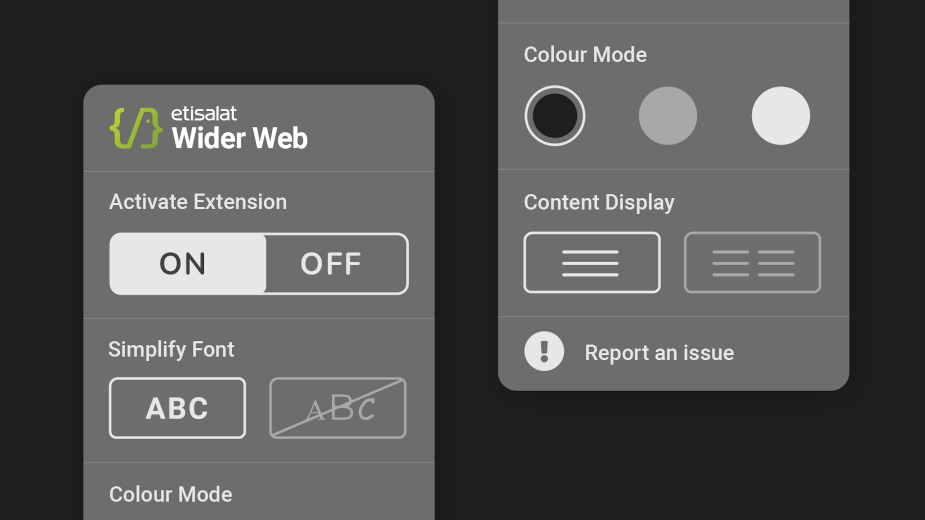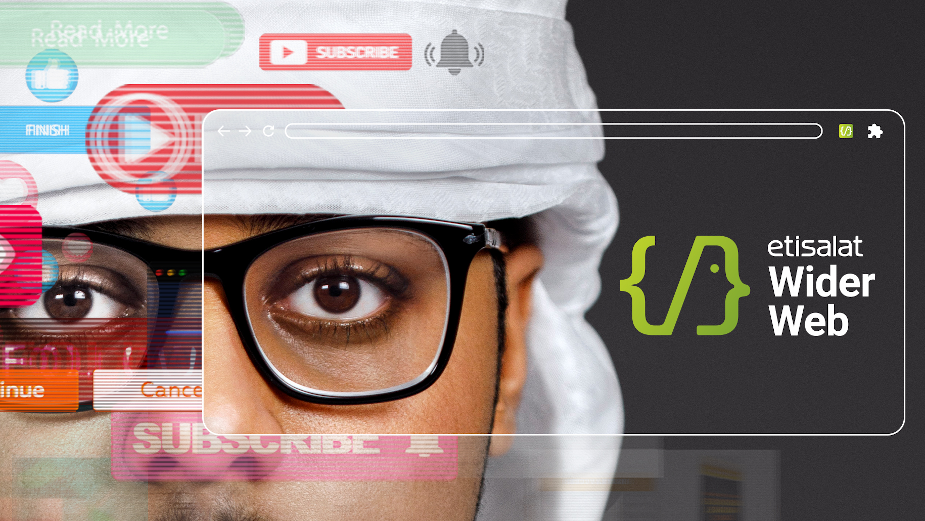
Behind the Work: How Etisalat and Impact BBDO Created an Autism-Friendly Way to Browse the Internet

On World Autism Awareness Day, telecoms giant Etisalat launched Etisalat Wide Web, a project that makes the internet more accessible and navigable for neurodivergent people, in particular people with autism. The centrepiece of the project is a browser extension that aims to utterly transform the web experience. It allows people to filter out sensory distractions by blocking autoplay videos, reorganise how information is presented and change colour modes and fonts with ease. It also facilitates a highly individual and personalised experience too as the extension is adaptable to each person’s needs.
In order to make a tool that was truly useful, the team at Etisalat’s agency Impact BBDO worked with people with autism and local psychologists in the UAE on the project, and the end result is a case study of collaborative and inclusive design.
LBB’s Laura Swinton caught up with Alex Rodrigues (digital creative director), Martino Caliendo (senior creative) and Faten Almukhtar (digital art director) to find out about the research and design process.
LBB> What conversations were you having with Etisalat that led you to the idea that you wanted to create something for the autistic community? And why was it an area that was right for the brand to tackle, strategically?
Alex> Our conversation with the brand team at Etisalat is always on and we knew that raising awareness around autism was something they wanted to work on for a long time. Etisalat stands for togetherness so it’s in their DNA to find solutions to whatever is an obstacle to it. In this case the very nature of the web itself. It’s also a brand that believes in using technology to bring people closer and if you look at it in this way what we proposed is almost organic.
LBB> What was your starting point? And how did you define the problem?
Martino> We started with some research on the topic and found out that the one of the most important symptoms of autism is sensory overload: meltdowns, problems with social interactions and avoidance of public spaces all come from that. The creative switch was to understand that today’s biggest and most information-ridden public space is the web.
LBB> What sort of research did you do with neurodivergent people and specialists to zero in on the problems with the web in its current state? And what did you find?
Faten> We read a lot of academic research on accessible design and autism, but we came to rely heavily on the Emirates Autism Centre and the Special Olympics to connect us to the autistic community and get them involved in the process from day one. From conversations and user testing we learned that the experience online really varies from person to person. This quote kept coming back: “If you've met one person with autism, you've met one person with autism.” It’s something that resonated with us when it came to finding solutions and helped refocus during development.
LBB> When developing ideas and solutions, what was your approach? And how did you test them out to make sure that you were on the right track?
Martino> Our approach was: “let’s listen, first”. As creatives we may risk being taken away by our ideas but here, we had to design a product, from scratch, for people with minds different from ours. The main question for every pixel was: is this necessary? Is there too much information? How can we make it simpler? We also had to be very strict with the design choices.

LBB> What was the most interesting part of the UX design process?
Faten> I think what made this project so different was the collaboration with the autistic community throughout the whole design and development process. We had the great support of researchers, psychologists, parents and autistic people that allowed us to really come to understand our users’ needs. As designers, it challenged preconceived notions we may have had and helped us reprioritize our features and technology used on the extension.
LBB> I’m really curious about the finished product – it looks like you combine some familiar elements like the ability to go into ‘dark mode’ and ad/pop up blockers with new ways of organising and tidying up the way information is laid out on the page, putting information into boxes. How do all these aspects work together?
Alex> we had to come up with solutions that were fast, familiar and non-invasive but that delivered the result. For example, there was no point in having an incredible technology that could take up to 30 seconds to upload a page if autistic people get anxious waiting for that, right?

LBB> How has the experience of making this extension made you think about accessible web design? Is there anything specifically that you’ve learned that you will take with you into future projects?
Faten> Definitely! I think a lot of the time as creatives we are so concerned about reinventing the wheel to providing new dynamic and fresh design on the web that we forget about the users. Through this experience we’ve come to realize that above all access to the information is the priority and simplicity always wins.
LBB> More generally, do you think creatives and designers need to think more carefully about how accessible their UX is for neurodivergent people?
Faten> For sure, in the world we live in today we have a responsibility to make sure there is equal access to information and experiences that we get to create for the world. Sometimes these simple additions or adjustments can make the world of difference for someone.
LBB> What impact do you hope this will have?
Martino> Etisalat is the biggest brand in the region and we want to lead by example so we hope it will be an inspiration for other brands to start working on effective solutions for these issues. It’s important for brands to work on their close environment as we’re talking about companies that are sometimes richer than a lot of nations in the world.
LBB> And from a communications point of view what do you hope the wider community will learn about autism and neurodivergence from this project?
Alex> We hope they will learn that autism is a difference and not a disease. We hope the community understands that it is up to everyone to be inclusive and to create a space that is welcoming to everyone. And that it’s rewarding.
LBB> How are you pushing this project out and activating it and encouraging autistic people and parents with autistic children to try it out?
Martino> This is the part of the project we care about the most. Together with our client, in the person of Yasmeen Mallah, we’re working really hard in the UAE to have centres, psychologists and schools to adopt the extension. We discovered there is a huge interest for this kind of initiative and also big brands like Unilever asked us to participate in a webinar to talk about Autism and inclusivity. We hope to have other brands and institutions on board soon.













